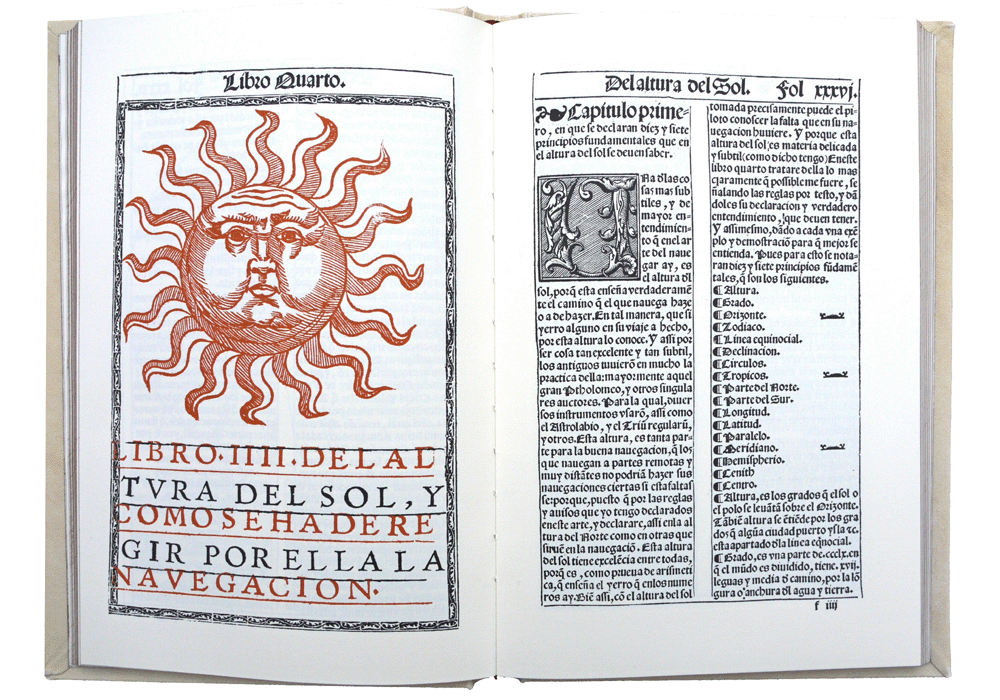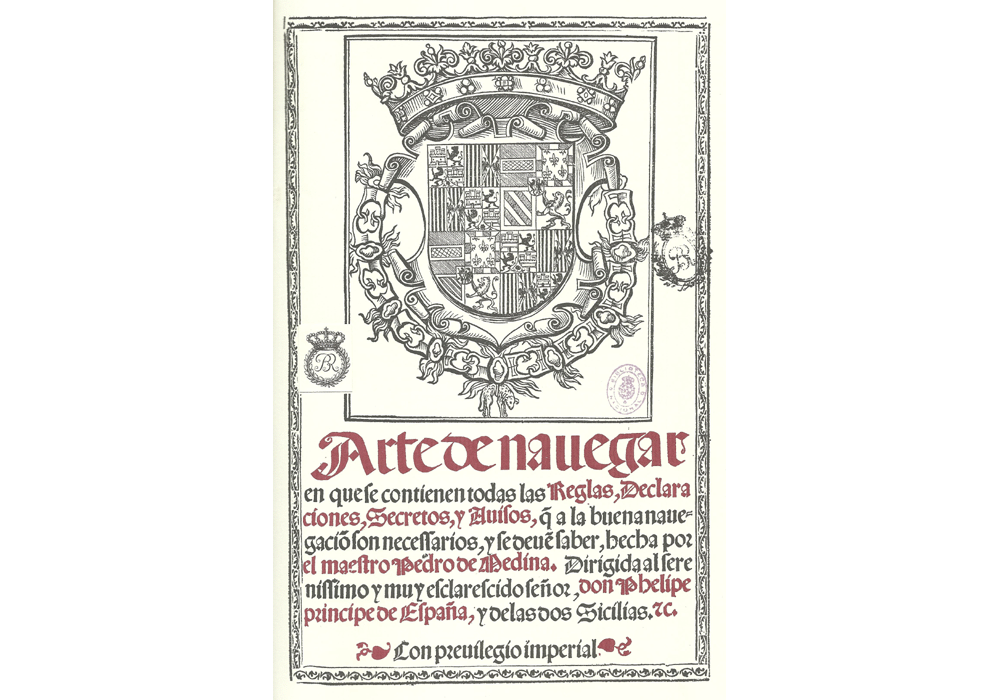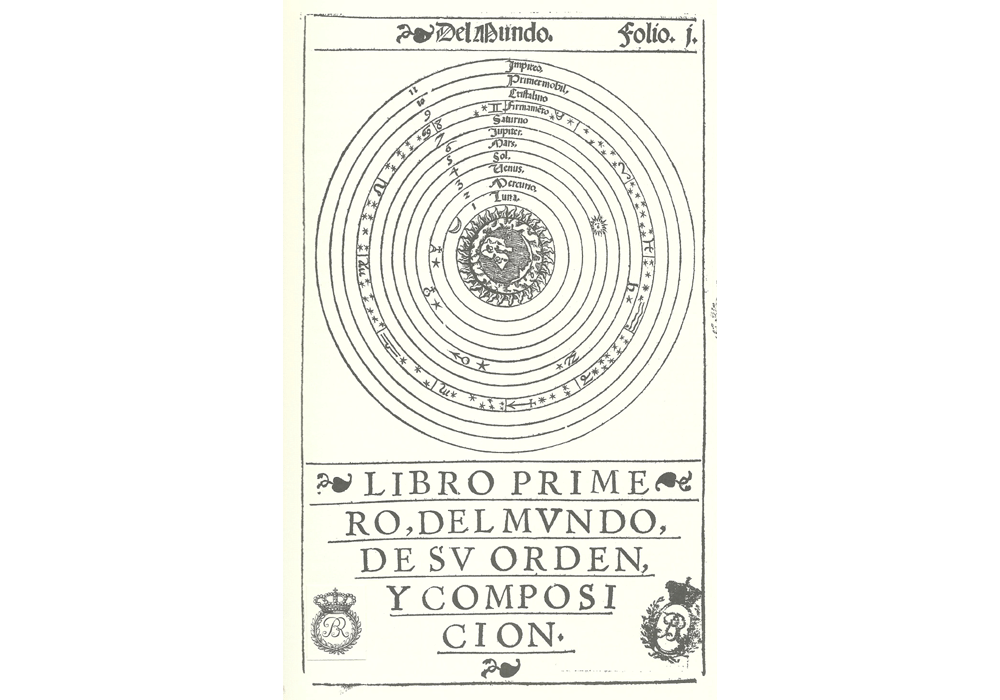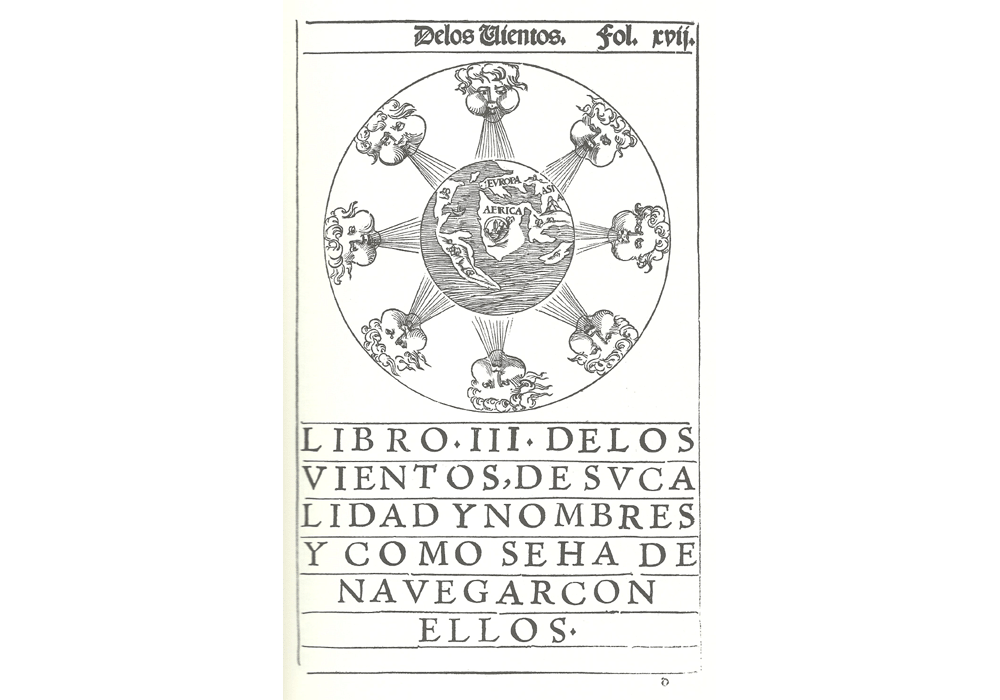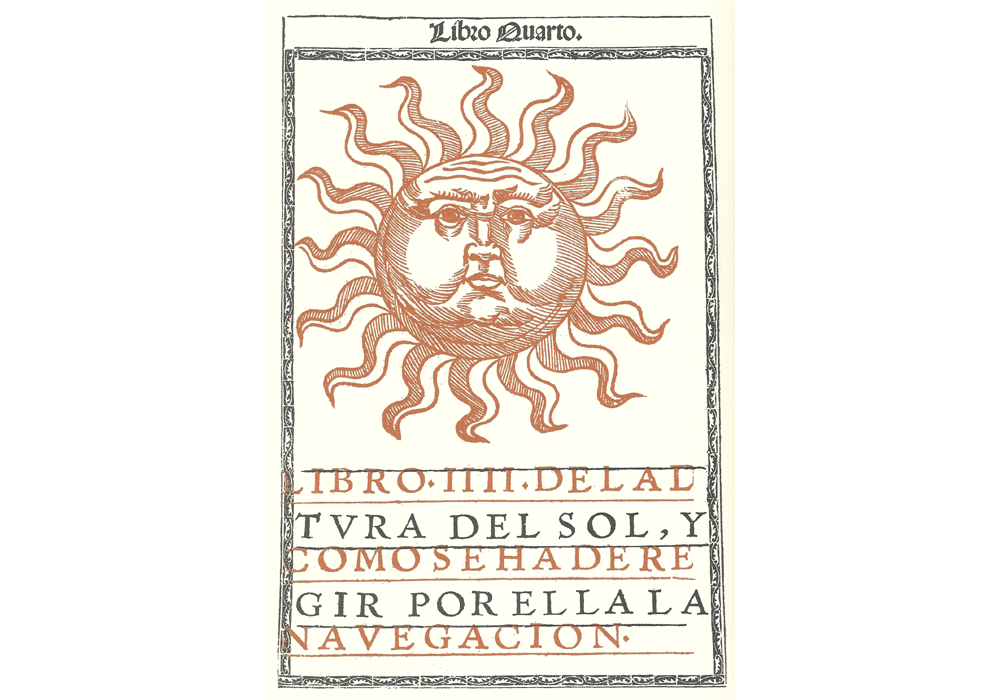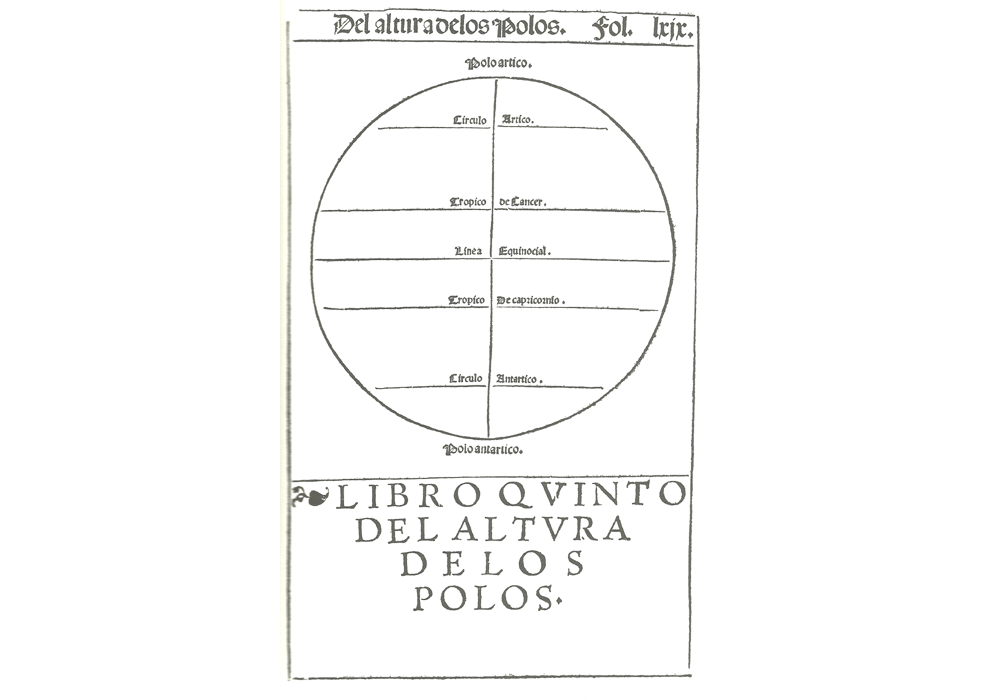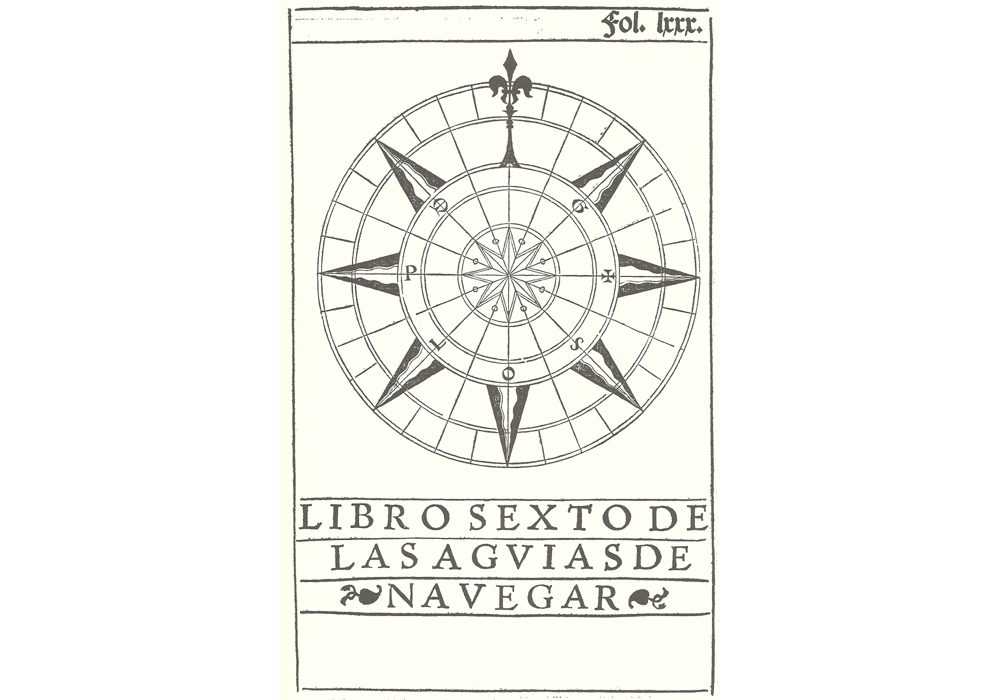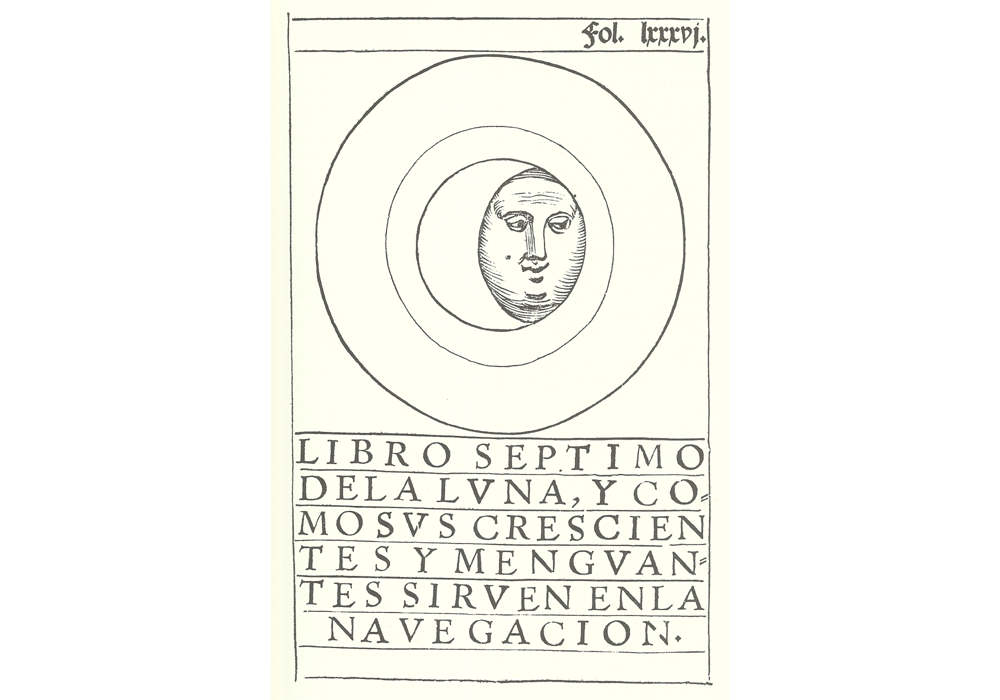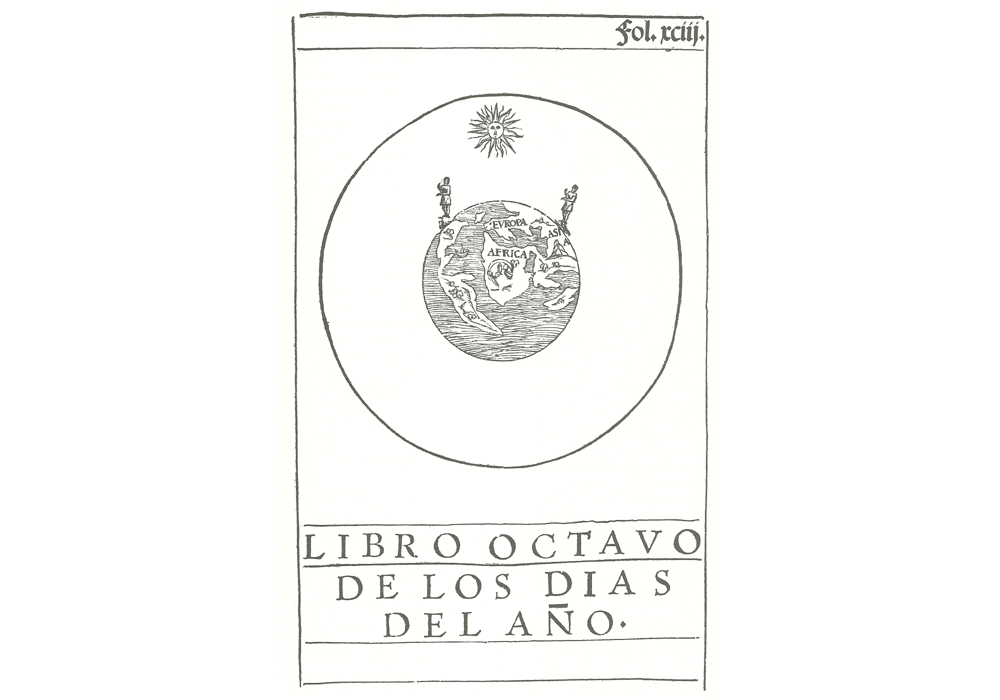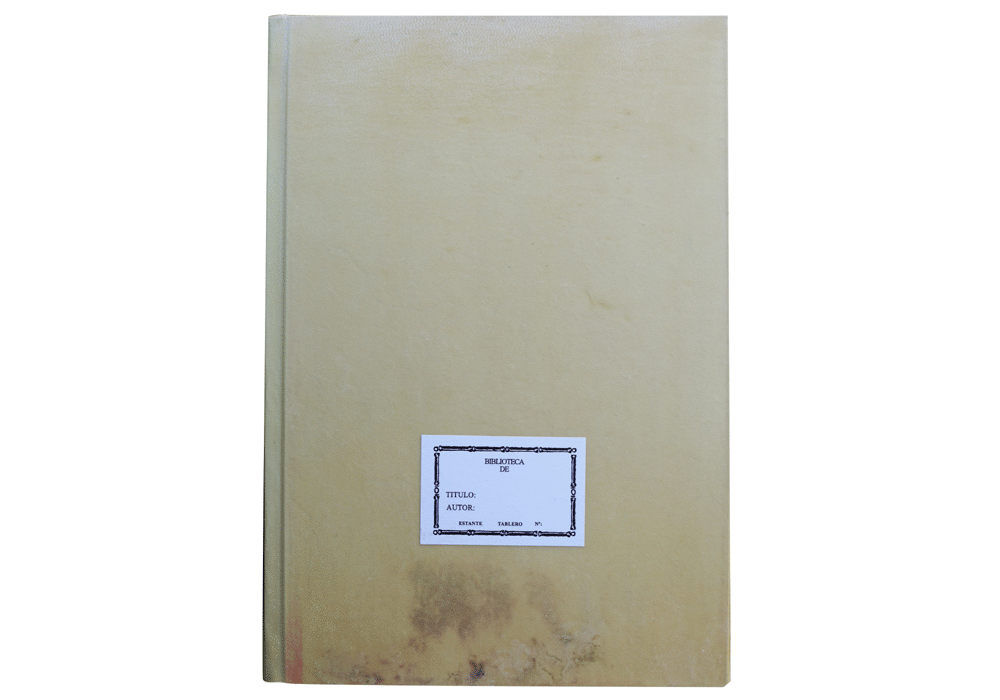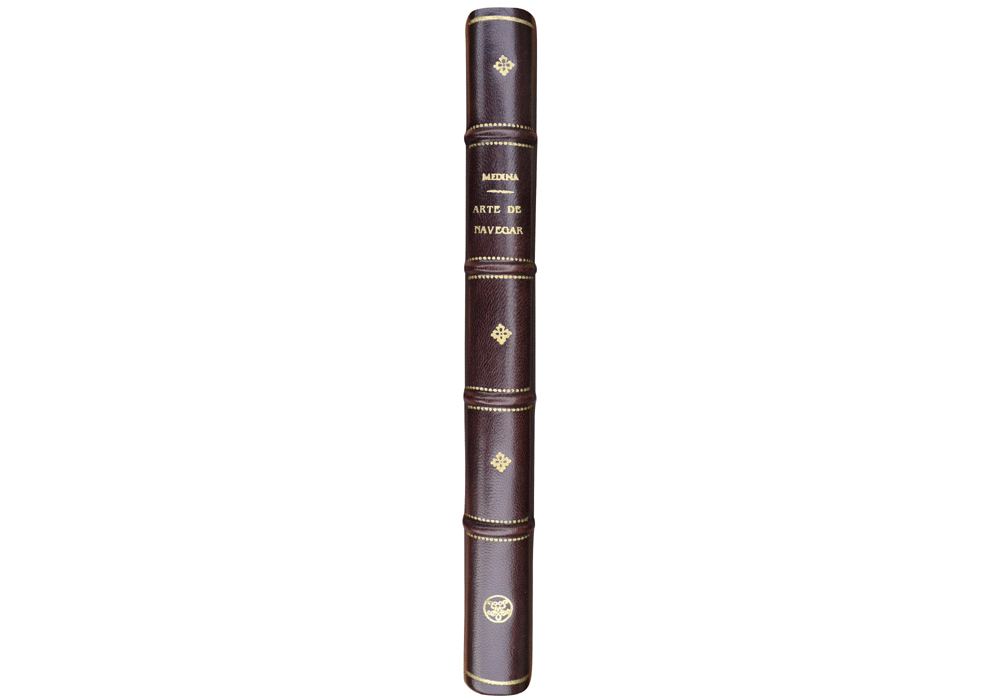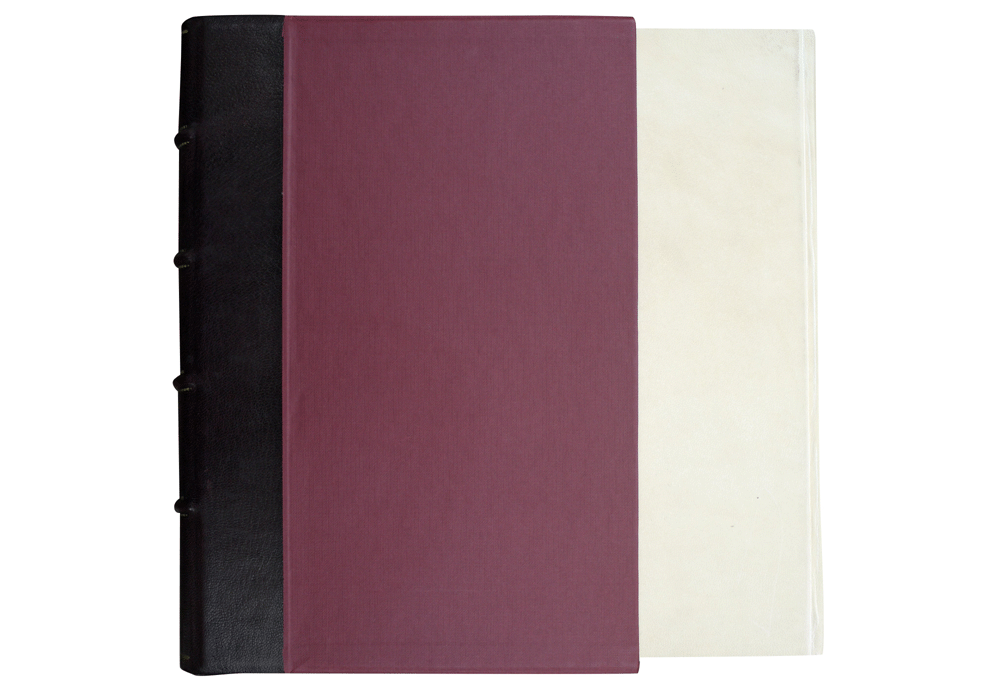|
|
|
| Seguir @vicentgarciaedi Twittear |
|
vgesa |

|
|
|
Synopsis: The title page, the open door, of this book, invites one to get in, to go into the deep sea. The royal shield in a double lined frame, floats over the title in red and black ink: Arte de nauegar en que se contienen todas las Reglas, Declaraciones, Secretos, y Avisos que a la buena navegación son necessarios, y se deuen saber, hecha por el maestra Pedro de Medina. Dirigida al serenísimo y muy esclarescido señor, don Phelipe principe de España, y de las dos Sicilias, etc (the Art of Navigation contains all rules, declaration, oaths, secrets and warnings, which are necessary for good navigation and are useful to know, as are told to us by Pedro de Medina. Explained in a clear and serene way to the Serene Royal highness, Don Phelipe, prince of Spain and two Sicilies, etc). It is added to the print that it has royal patronage. Instinctively we'll reach to the colophon, but we would like to know a little bit more data: Here it is said that the author is a neighbour of Seville (but it is not added that he is also a clergyman, mathematician, cosmographer and historian); in relation to his text that 'was seen and approved in the House of Contracts of the India's, by the chief pilot and cosmographer of his Majesty'; and of the printer who worked for them in his workshop, 'near the university residences', in Valladolid, concluding the process of printing the first day of October of 1545. Pedro de Medina was born in Seville (or in Medina Sidonia) around 1494 and died in Seville in 1567. He carried out a number of trips to the New World and was later a teacher of Navigation and pilot examiner. Apart from the news of some pieces of work that we don't know the copies. We must remember that there are some other interesting texts whose old editions are very appreciated by the book lovers. Regimiento de navegación (Regiment of navigation), Libro de grandezas y cosas memorables de España (Book of great and memorable events in Spain) and Libro de la verdad (The book of truth). Clearly, his greatest success was the book of navigation and one can see that it was translated to German, French, English, Italian and Dutch. The useful and teaching purpose of the Art is shown by the presence of xylographic engravings. The beauty of these prints is clear to see: alternating designs and functions in gothic and round lettering using a variety of different engravings and sizes. The detail of presenting framed the text of the pages, separated columns, running titles and headings; the presence of two colour inks, proliferated by decoration of hearts at the background, with a colophon closes the book in the shape of cartela, with a simple square, entered in the blank surrounded by the frame.
|
IBIC Rating: |
||
|
AC History of art / art & design styles |
1D Europe
|
|



